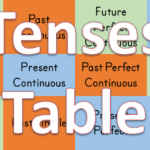Hello, students! 🌟 Today, we’re going to explore the Parts of Speech in English. These are the building blocks of sentences, and understanding them will help you become a better writer and speaker. Let’s break them down in a simple way.
What Are Parts of Speech?
Parts of speech are categories that describe the function of words in a sentence. There are eight main parts of speech in English. Each one plays a different role, just like the different players in a football team!
The Eight Parts of Speech
Here’s a quick overview of each part of speech:
- Nouns: Names of people, places, things, or ideas.
- Pronouns: Words that take the place of nouns.
- Verbs: Words that show actions or states of being.
- Adjectives: Words that describe nouns.
- Adverbs: Words that describe verbs, adjectives, or other adverbs.
- Prepositions: Words that show the relationship between a noun (or pronoun) and other words in a sentence.
- Conjunctions: Words that connect words, phrases, or clauses.
- Interjections: Words that express strong feelings or reactions.
Summary Table of the Parts of Speech

This table provides a clear overview of the parts of speech, along with examples to help you understand how they work in sentences.
Let’s Go Into Details!
- Nouns
- Definition: A noun is a word that names a person, place, thing, or idea.
- How to Use: Nouns can be subjects, objects, or even ideas in a sentence.
- Example: The cat (noun) is on the roof.
- Pronouns
- Definition: A pronoun takes the place of a noun.
- How to Use: Pronouns make sentences less repetitive.
- Example: She (pronoun) loves ice cream.
- Verbs
- Definition: A verb is a word that expresses action or being.
- How to Use: Verbs tell what the subject of a sentence is doing or what state it is in.
- Example: He runs (verb) every morning.
- Adjectives
- Definition: An adjective describes a noun or pronoun.
- How to Use: Adjectives add detail to sentences.
- Example: The blue (adjective) sky is beautiful.
- Adverbs
- Definition: An adverb describes a verb, adjective, or another adverb.
- How to Use: Adverbs often tell how, when, where, or to what extent something happens.
- Example: She sings beautifully (adverb).
- Prepositions
- Definition: A preposition shows the relationship between a noun (or pronoun) and other words in a sentence.
- How to Use: Prepositions often tell us about location, time, or direction.
- Example: The cat is under (preposition) the table.
- Conjunctions
- Definition: A conjunction connects words, phrases, or clauses.
- How to Use: Conjunctions join ideas together.
- Example: She likes apples and (conjunction) oranges.
- Interjections
- Definition: An interjection is a word or phrase that expresses strong emotion.
- How to Use: Interjections are often followed by an exclamation mark.
- Example: Wow! (interjection) That’s amazing!
Example Essay: “My Fun Day at the Park”
Let’s see how these parts of speech work together in a short essay.
“Yesterday, my family (noun) and I went to the park (noun). We played (verb) games and had a lot of fun. My sister is very funny (adjective) and made everyone laugh (verb). We sat under (preposition) a big tree (noun) and ate delicious(adjective) sandwiches. Wow! (interjection), the weather was perfect (adjective), so we stayed all day. I can’t wait to go back!”
If you’re ever confused about which part of speech a word is, just think about what role it plays in the sentence. Keep practicing, and soon you’ll master them all! Happy studying! 😊

